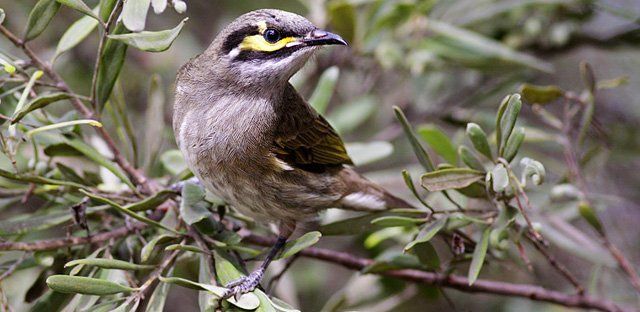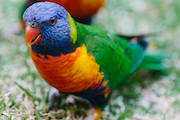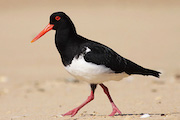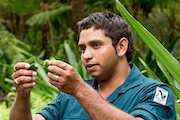Yellow-faced honeyeater
This slender honeyeater has a distinctive yellow strip under the eye on each side of its face, giving it its name. If you look closely, you’ll notice the yellow flash is framed with a band of black and the bird has blue eyes. Growing up to 17 centimetres, the bird is typical of honeyeaters, with a brown back and paler mottled-brown underneath.

Where
You are most likely to notice yellow-faced honeyeaters in autumn when they travel in large flocks from the mountains to the coast. During this time they can be seen and heard throughout Booderee’s forests.
Feeding
Yellow-faced honeyeaters feed on nectar, pollen, fruit, seeds and insects, foraging in the flowers and foliage of trees and shrubs. You will rarely see them on the ground.
Breeding
Nests can be found in narrow branch forks, made from bark and grass and lined with moss. Two or three eggs per breeding pair is common.
Sounds
These honeyeaters are quite noisy - their calls include a chick-up and a pirrup pirrup pirrup.
Stay in touch
Subscribe to receive important updates about Booderee National Park.




